TEXTUAL ANALYSIS
TEXTUAL ANALYSIS
Zadie Smith wrote her first novel, White Teeth (2000), when she was a twenty-
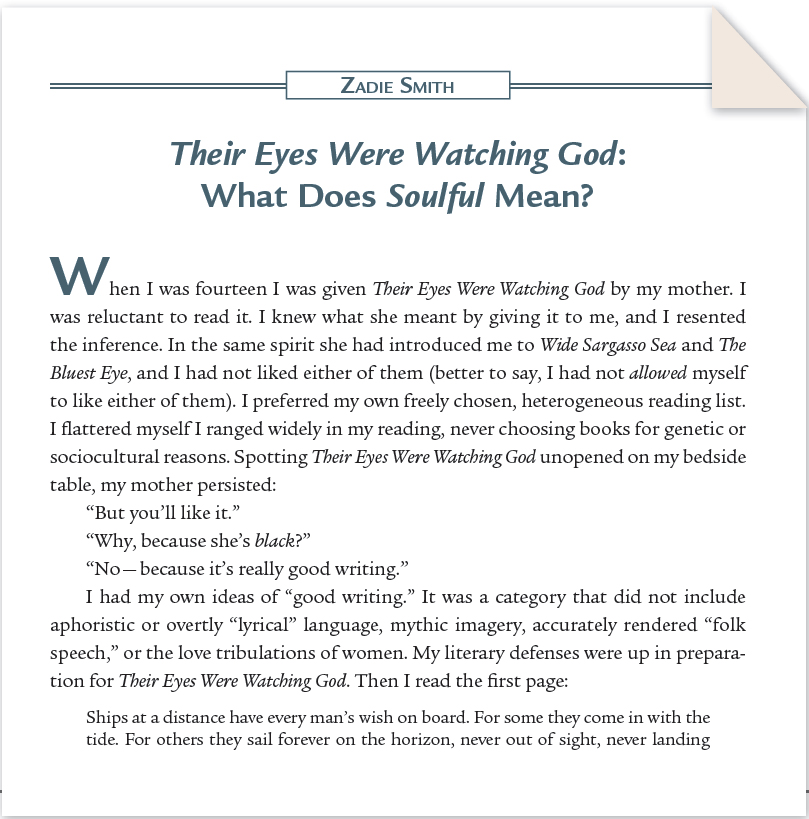
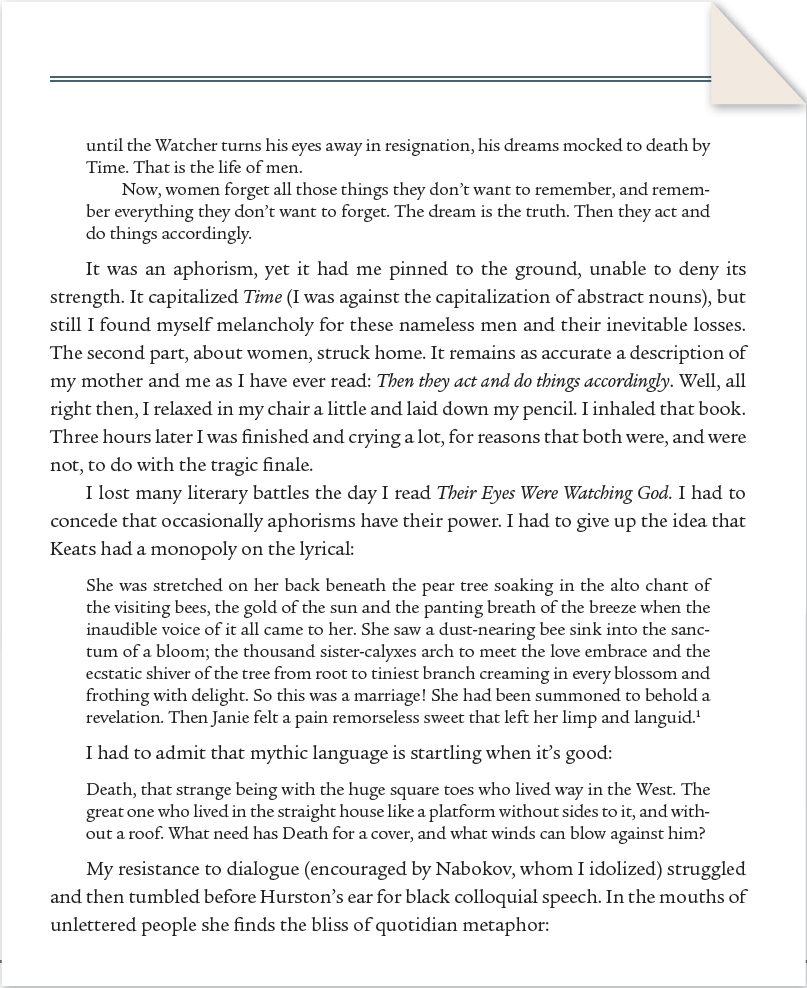
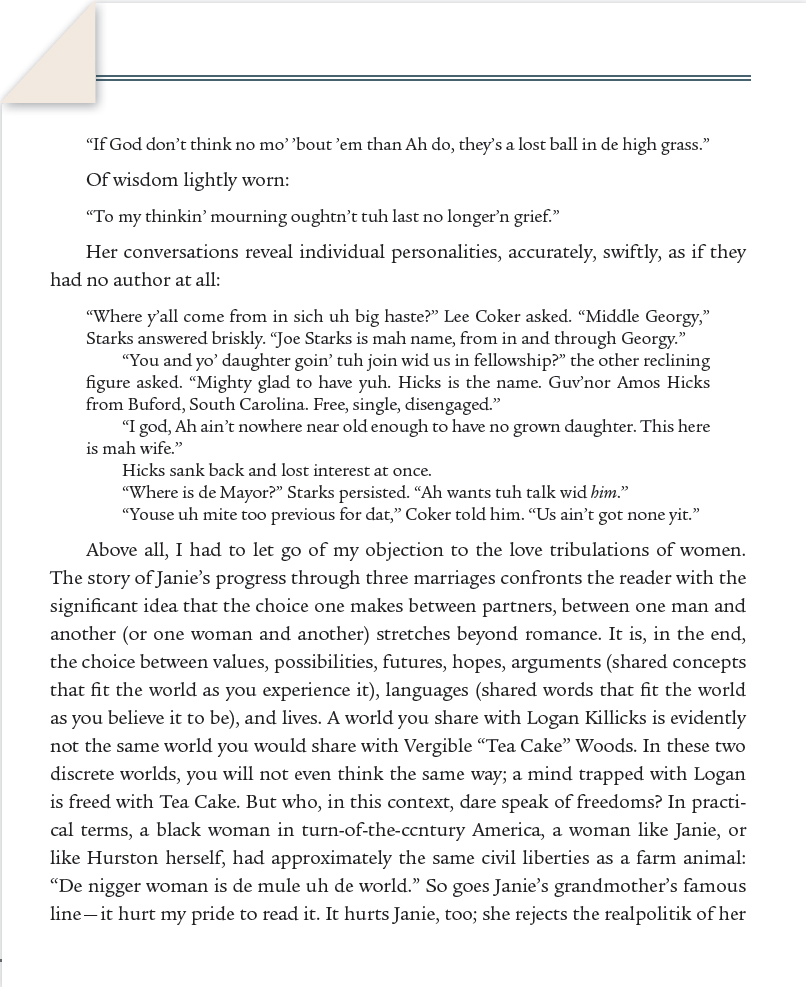
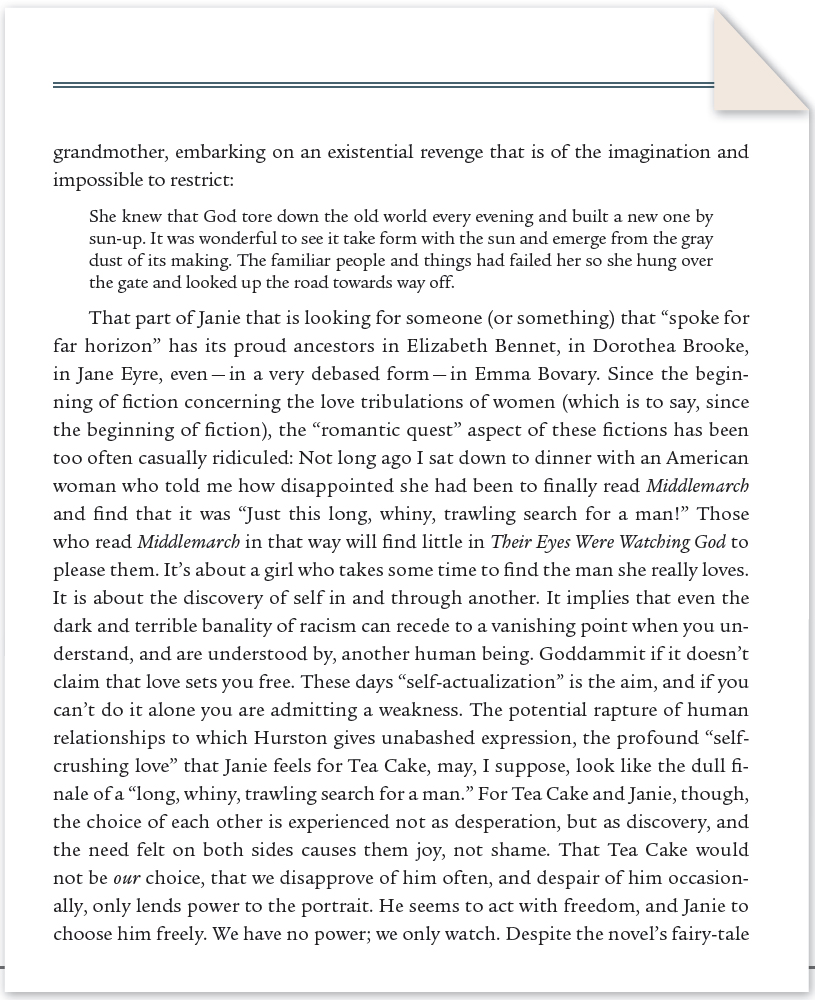

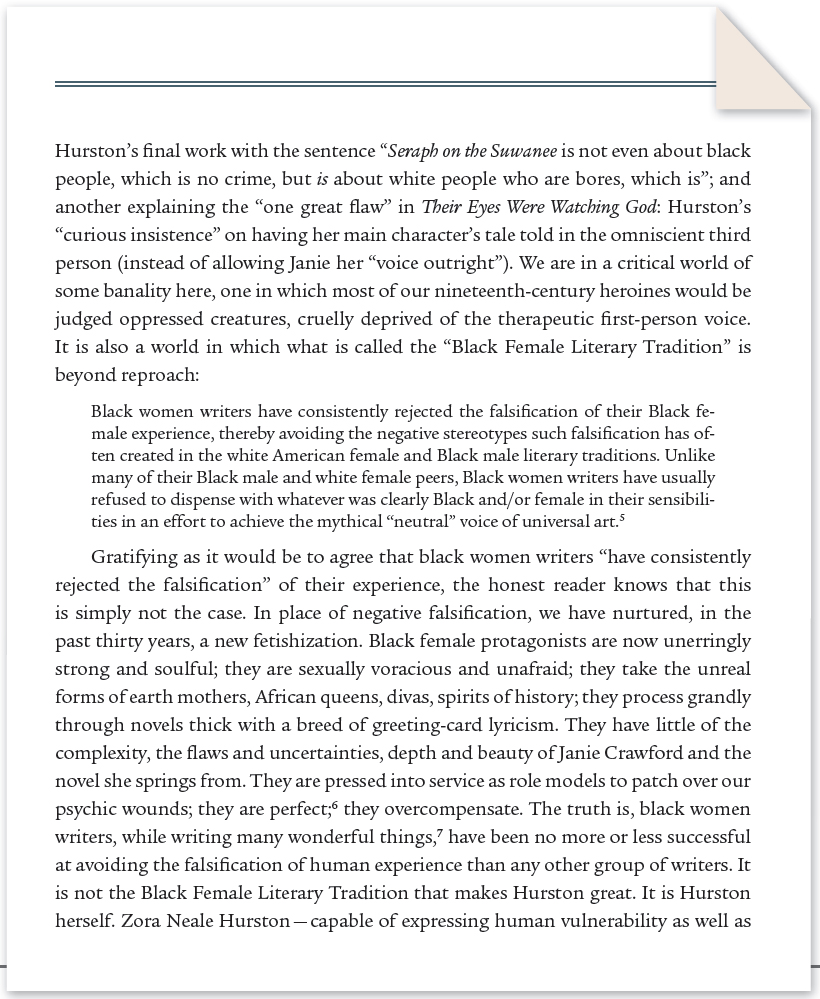
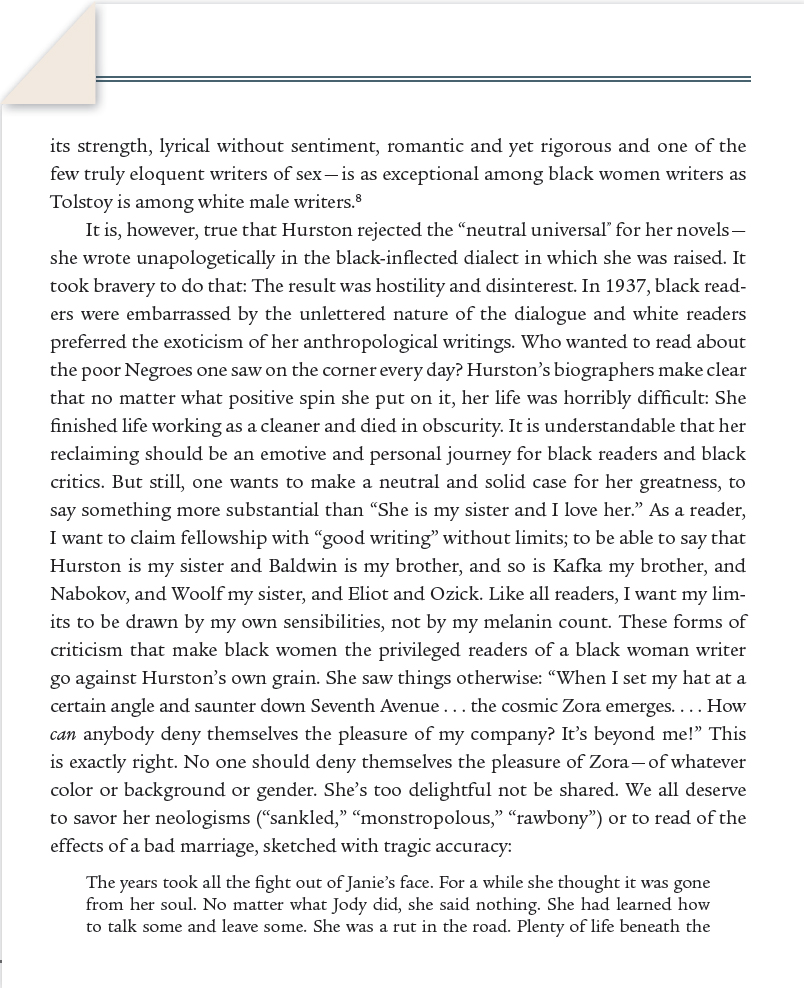
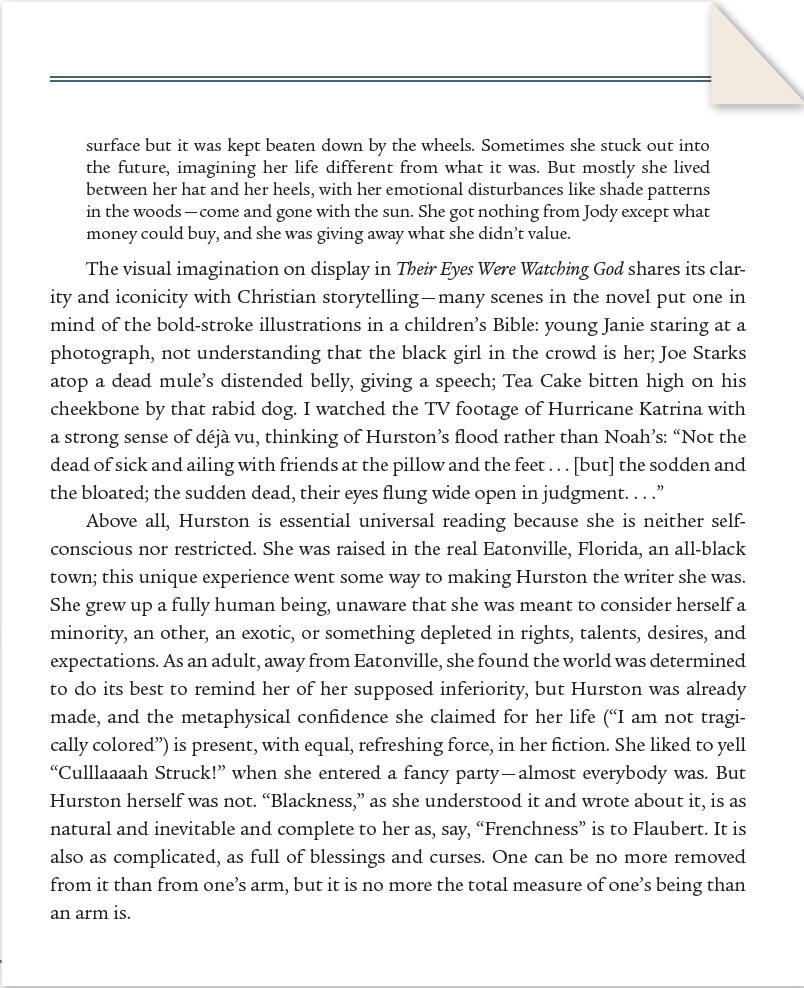
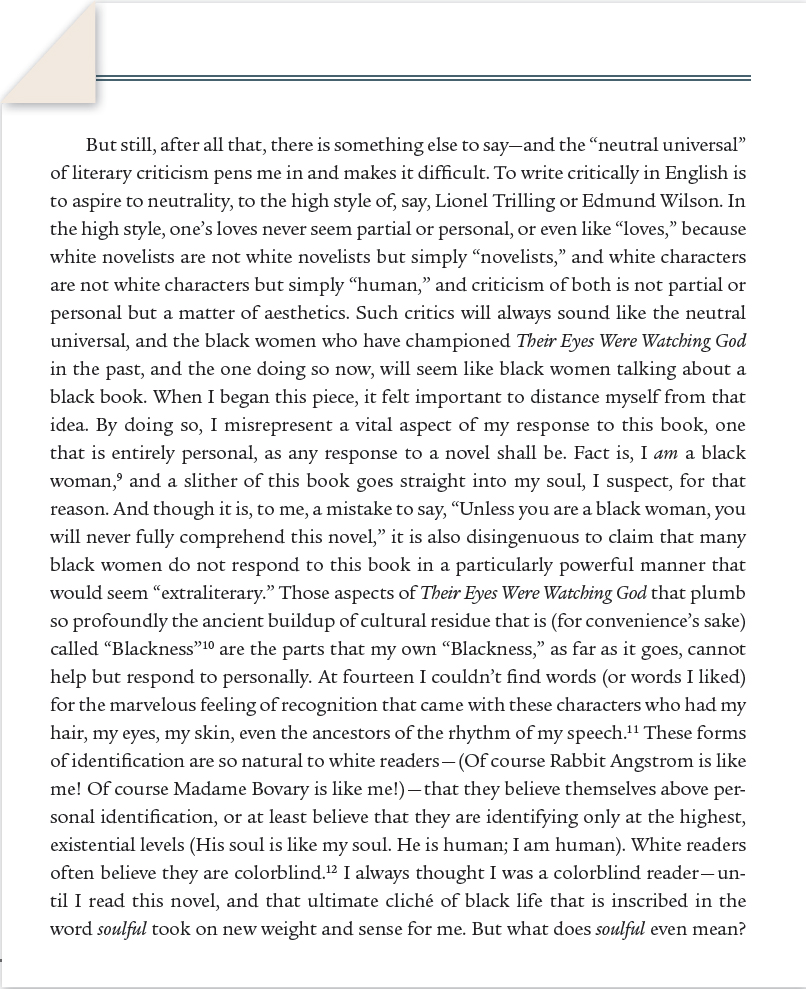
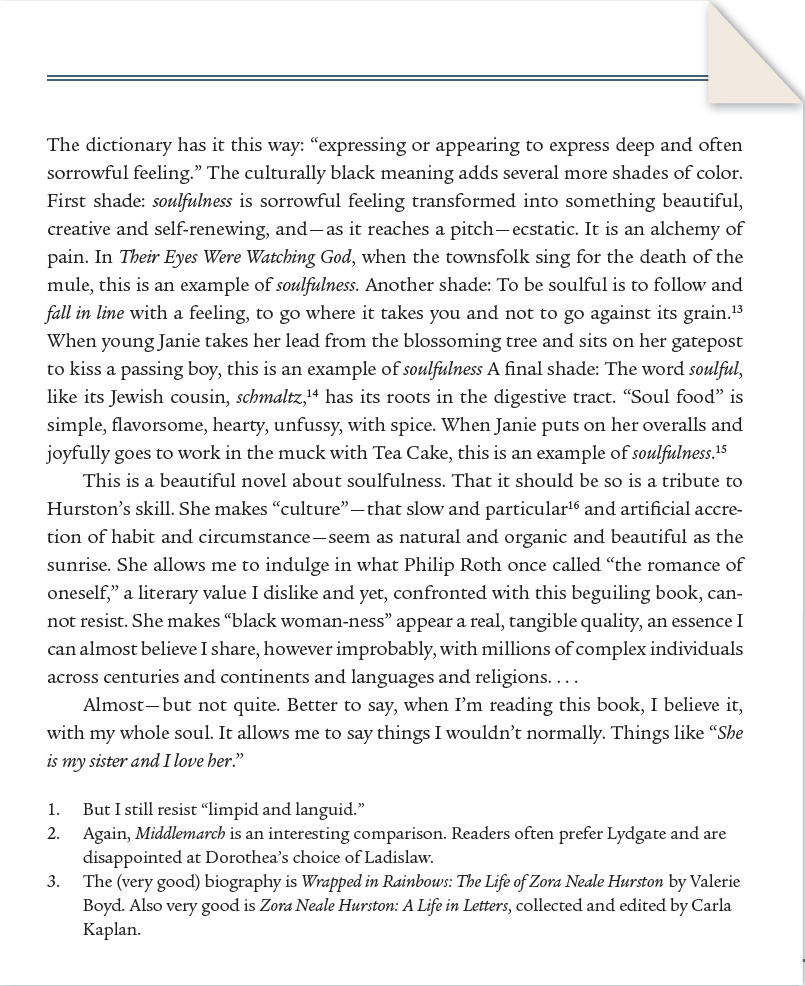
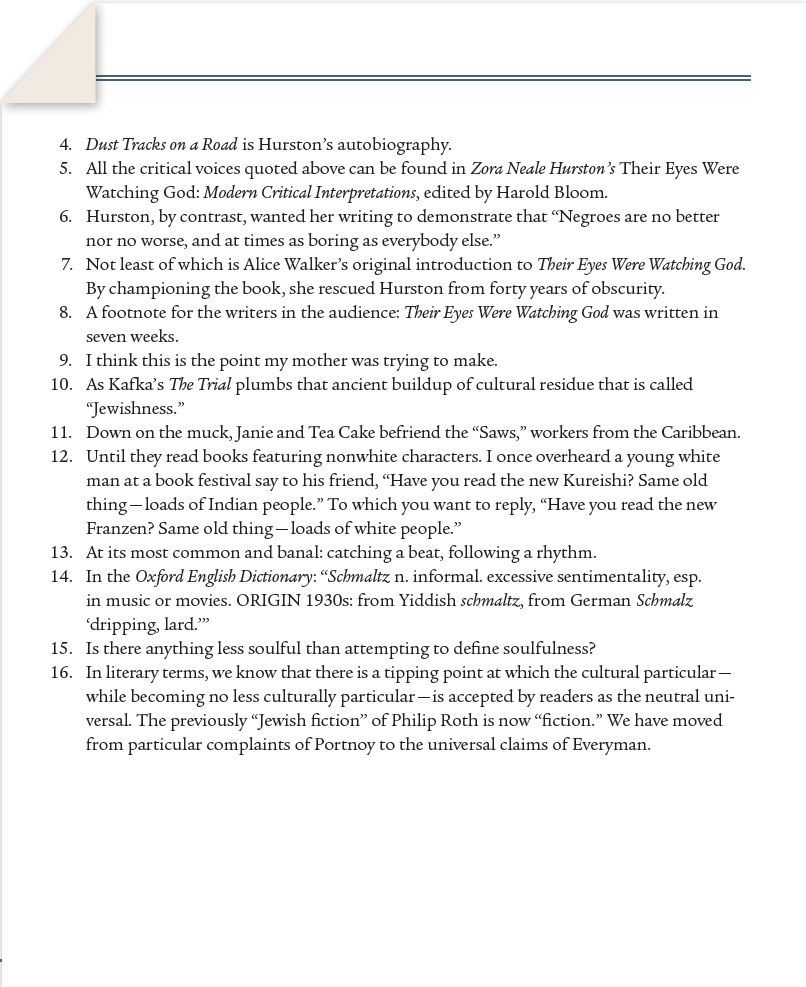
Reading the Genre
Question
1. Smith identifies some key literary features in Zora Neale Hurston’s writing: aphorisms; the lyrical, mythic language; colloquial dialogue. Find definitions for these literary terms and forms. Then find examples of other authors who use these techniques.
Question
2. This is a literary analysis of a novel, but it is also an essay about the conventions of literary analysis itself. What rules does Smith set for her own critical analysis, and how does she come to break them? In academic writing, how are you expected to emulate the “high style” or “neutral universal” traditionally adopted by literary critics, and in what ways do you want to respond more personally in your own analytical writing? (See Chapter 32, “High, Middle, and Low Style”.)
Question
3. What does soulful mean to you? If you don’t identify with that term, find a word that encapsulates the kind of writing (or art, or expression) that makes you respond personally, and explain why you have chosen this word.
Question
4. WRITING: Smith admits that part of the reason she was skeptical about Their Eyes Were Watching God was because her mother gave it to her. Write your own personal narrative about a book that someone shared with you. This could be a novel, or it could be a children’s book you read when you were much younger. (To jog your memory, visit the children’s section of your local library.) How did the experience of sharing this book shape your feelings about it?
Question
5. MULTIMODALITY — CHARACTER SKETCHES: To attempt to capture colloquial language, as Hurston does in her novel, eavesdrop on some conversations around campus. Don’t record entire conversations, but simply write down some of the most interesting phrases, sayings, and colloquialisms you hear. Don’t identify any of the people you overhear, but if you find you can’t do this, get permission from those you observe. Then discuss your findings as a class, focusing on how certain phrases seem to suggest certain types of characters or personalities. If it helps, you can try and sketch pictures of the types of people that the quotes and phrases make you visualize. The goal here is to recognize how language and dialogue also create powerful images, identifications, and associations.